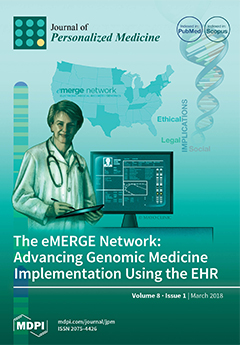Variability in response to antiplatelet therapy can be explained in part by pharmacogenomics, particularly of the CYP450 enzyme encoded by
CYP2C19. Loss-of-function and gain-of-function variants help explain these interindividual differences. Individuals may carry multiple variants, with linkage disequilibrium noted among some alleles.
[...] Read more.
Variability in response to antiplatelet therapy can be explained in part by pharmacogenomics, particularly of the CYP450 enzyme encoded by
CYP2C19. Loss-of-function and gain-of-function variants help explain these interindividual differences. Individuals may carry multiple variants, with linkage disequilibrium noted among some alleles. In the current pharmacogenomics era, genomic variation in
CYP2C19 has led to the definition of pharmacokinetic phenotypes for response to antiplatelet therapy, in particular, clopidogrel. Individuals may be classified as poor, intermediate, extensive, or ultrarapid metabolizers, based on whether they carry wild type or polymorphic
CYP2C19 alleles. Variant alleles differentially impact platelet reactivity, concentration of plasma clopidogrel metabolites, and clinical outcomes. Interestingly, response to clopidogrel appears to be modulated by additional factors, such as sociodemographic characteristics, risk factors for ischemic heart disease, and drug-drug interactions. Furthermore, systems medicine studies suggest that a broader approach may be required to adequately assess, predict, preempt, and manage variation in antiplatelet response. Transcriptomics, epigenomics, exposomics, miRNAomics, proteomics, metabolomics, microbiomics, and mathematical, computational, and molecular modeling should be integrated with pharmacogenomics for enhanced prediction and individualized care. In this review of pharmacogenomic variation of CYP450, a systems medicine approach is described for tailoring antiplatelet therapy in clinical practice of precision cardiovascular medicine.
Full article





